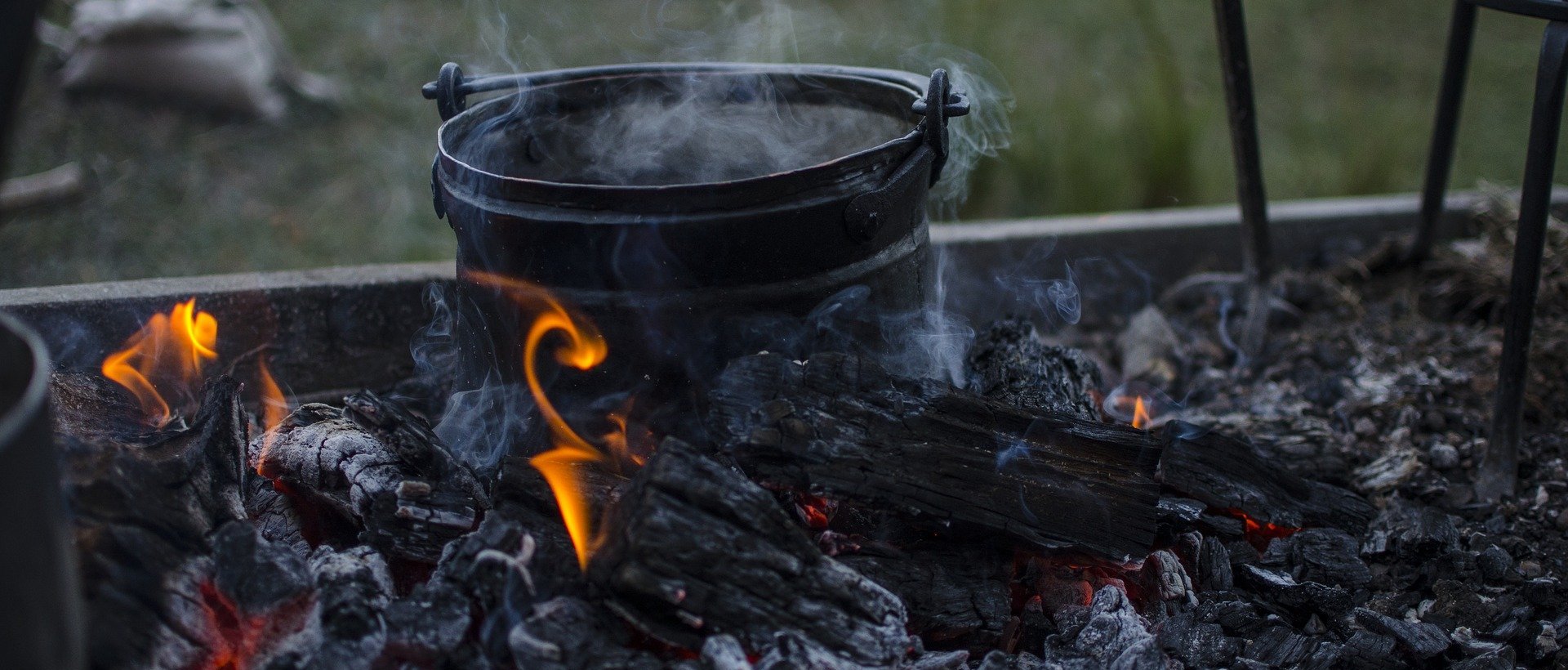Medieval Food Preparation
Posted on 31st December 2020
Preserving food was important in the middle ages to sustain a family through the harsh winter months. Any food that could not be preserved was only eaten in season.
Meat and fish were salted and then dried, smoked or pickled; fruit and vegetables were dried. The salting process of preserving food made it very salty when used, to compensate for this the food was heavily spiced.
Food was roasted, boiled, baked and fried.
Poor – Often only had access to a fire pit and cauldron, so they lived mainly on stew or soup (Pottage). Sometimes families had access to a shared oven for baking.
Wealthy - Castles and manor houses had large fully equipped kitchens with baking ovens and fireplaces for smoking and roasting food. Other rooms led off the kitchen including the buttery, pantry and storerooms.
A large boiling pot, a ‘kettle’ was used to make stew or porridge and iron pans were used for frying. Cooking utensils were made from iron, clay and wood.
A pestle and mortar, was an essential requirement, used to grind herbs and spices to flavour the food.
Most food was eaten with the fingers; a knife was used for cutting; soup was eaten straight from the bowl..
Tagged as: Junior Middle Ages
Share this post:





